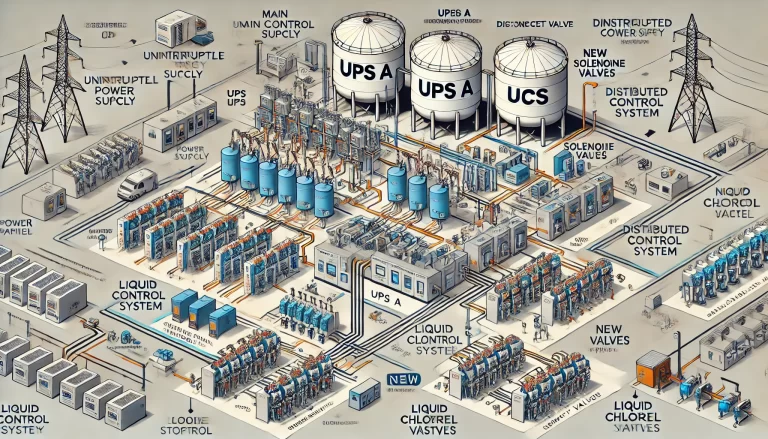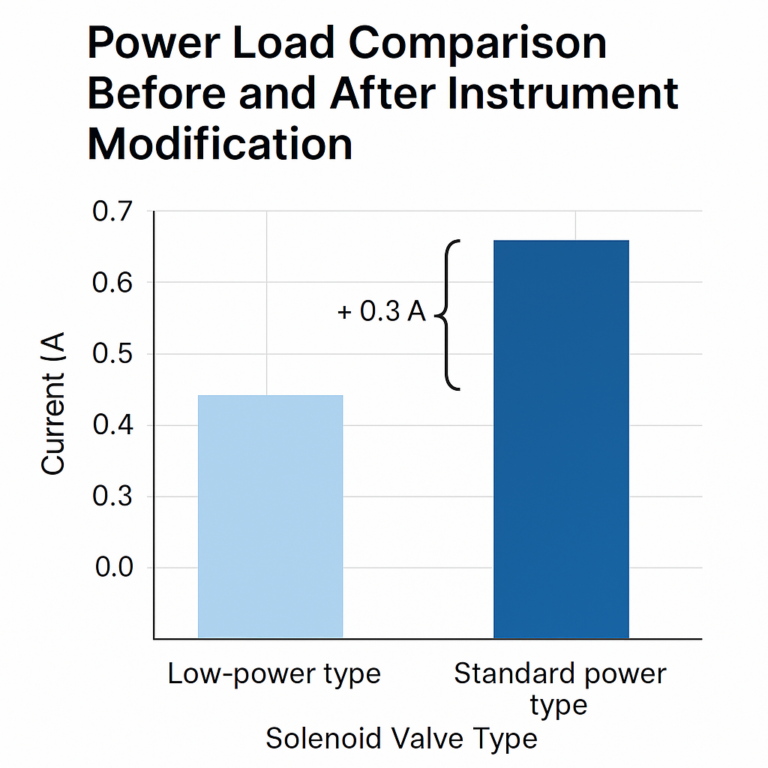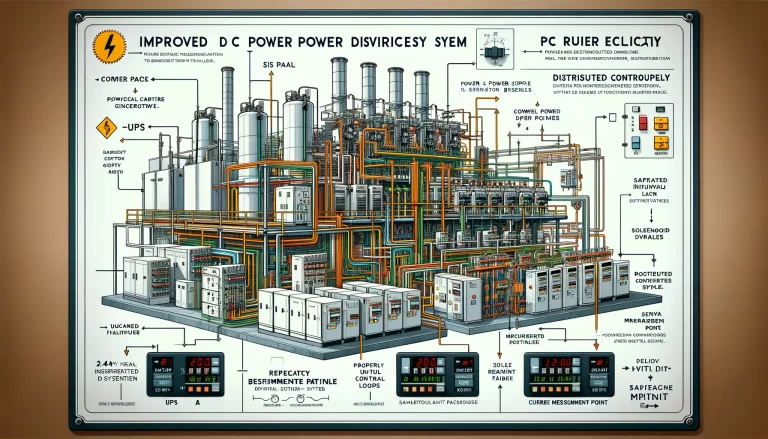Background
In a 120,000 tons-per-year polyvinyl chloride (PVC) production facility, a critical incident occurred during the commissioning of newly installed valves on a liquid chlorine storage tank. The sudden shutdown was triggered by a tripped power supply circuit, which resulted in a full-scale plant stoppage and elevated the risk of hazardous chemical leakage. The root cause was traced back to excessive power consumption from newly added solenoid valves, which overloaded the existing power circuit due to improper capacity assessment and unmanaged technical modifications.

Process Overview
The facility uses calcium carbide and brine (NaCl solution) as raw materials. Chlorine and hydrogen gases are generated through electrolysis and react in a combined furnace to form hydrogen chloride, which further reacts with acetylene (from calcium carbide hydrolysis) to produce crude vinyl chloride gas. This gas undergoes rectification and polymerization to form PVC slurry, which is then dried and packaged.
The control system is based on a DCS platform (Distributed Control System), and modifications over the years have included over 10 rounds of cabinet expansion and more than 100 additional interlock loops for safety instrumented systems (SIS) and DCS logic.

Incident Description
Pre-incident System Status
The DCS control room is powered by two UPS systems with a disconnect switch in between, which was in the “open” state. Following multiple expansions after a safety instrumentation revamp in 2019, the electrical load of the DCS switchgear increased significantly.
Newly installed valves (for breathing, balancing, and return cut-off functions) had higher power demands than the existing low-power solenoid valves, leading to excessive current during commissioning.
Failure Details (March 22, 2021)
At 10:02 a.m., during the wiring and commissioning of valves on the third liquid chlorine storage tank:
All control valves in Unit PVC3 triggered alarms.
SIS actions led to shutdowns in both the chlorine-hydrogen and acetylene systems.
Hydrogen pressure deviations in the caustic soda unit caused further safety interlocks.
The source of the issue was traced to the expansion relay cabinet tripping due to overcurrent.
Impact Scope
Full plant shutdown, resulting in production losses.
High risk of hazardous chemical leakage, including chlorine and hydrogen.

Root Cause Analysis
Electrical Evaluation:
Original low-power solenoid valves: 24V DC, 3.5W (current ≈ 0.15A).
New solenoid valves: 24V DC, 11W (current ≈ 0.46A).
Per valve, current increased by approx. 0.3A.
Simultaneous operation of 8 valves during commissioning caused momentary current surge >10A, exceeding the 10A breaker capacity.
Immediate Causes:
Inadequate circuit breaker capacity for increased load.
No load assessment conducted for new solenoid valve installation.
Breaker trip occurred not due to short-circuit but due to overcurrent.
Systemic Causes:
Routine electrical checks did not account for total load on safety barriers, relays, or breaker selection.
Equipment modifications were made without following change management procedures.

Management Failure
There was no formal risk assessment or approval process for instrumentation modifications, violating internal management procedures for equipment changes.
Corrective Actions
Immediate Measures:
Replace the tripped breaker with a higher capacity model.
Conduct detailed current measurement across all added circuits.
Resume normal operations after ensuring safe load margins.
Preventive Measures:
Conduct load assessments for every modification involving instrumentation or actuators.
Update breaker ratings in accordance with actual measured loads.
Review entire DCS and PLC power supply loops, replace any inappropriate components (e.g., AC breakers in DC systems).
Reinforce change management — major modifications should undergo departmental technical review.
Design Recommendations
According to instrument power supply standards (e.g., SH/T 3082-2019):
Use 1:1 redundancy in DC power supply systems.
Distribute power sources among cabinets to reduce single-point failures.

Key Takeaways
Always assess total circuit load when adding devices like solenoid valves.
Ensure breaker sizing matches peak current conditions during valve actuation.
Establish a strict change management framework for all instrument-related modifications.
Prefer low-power solenoid valves in hazardous or battery-powered environments to reduce system stress.
Knowledge Notes
In explosion-proof or remote installations, low-power solenoid valves are strongly recommended due to their ability to operate over long distances, generate less heat, and reduce power supply strain — especially when battery-powered or in intrinsically safe systems.
